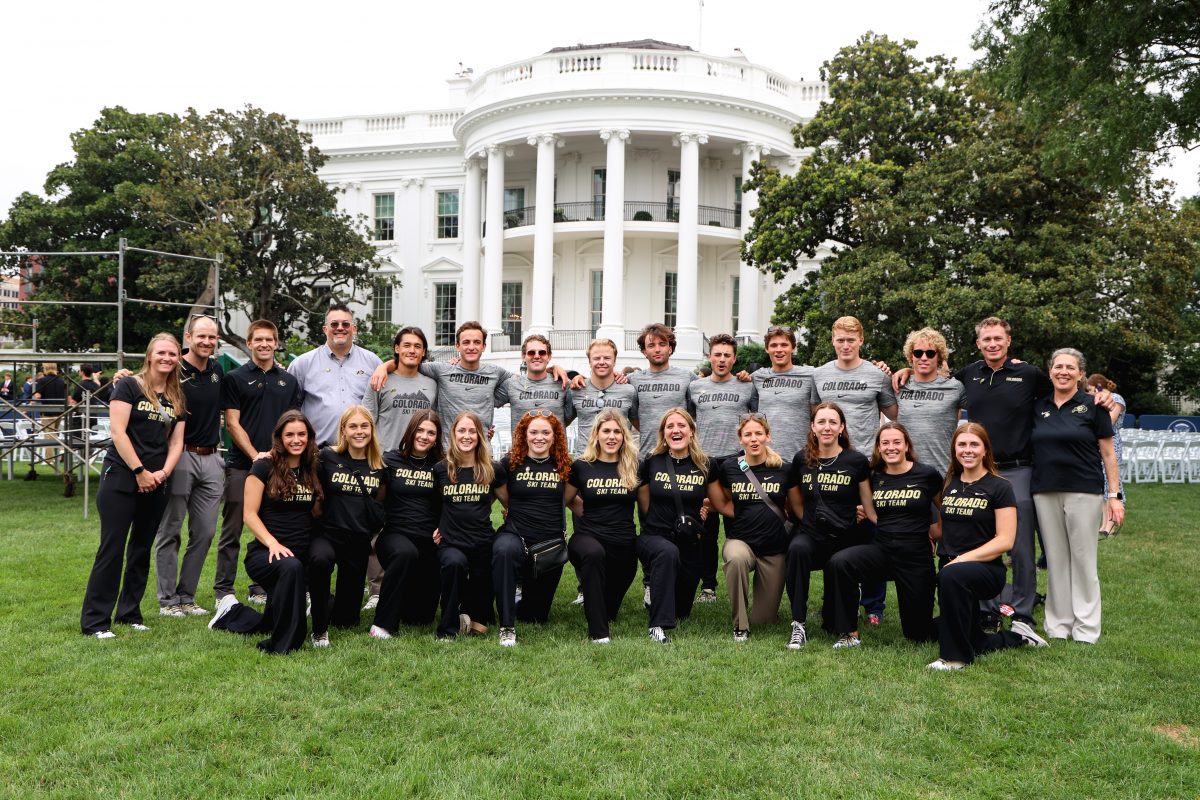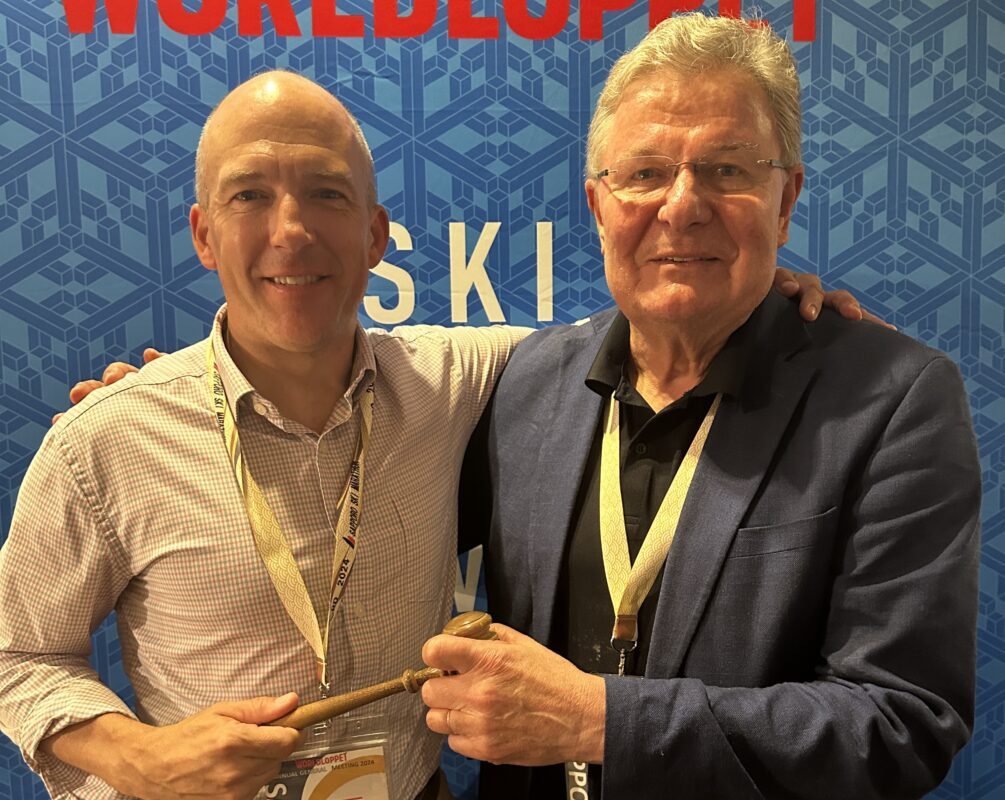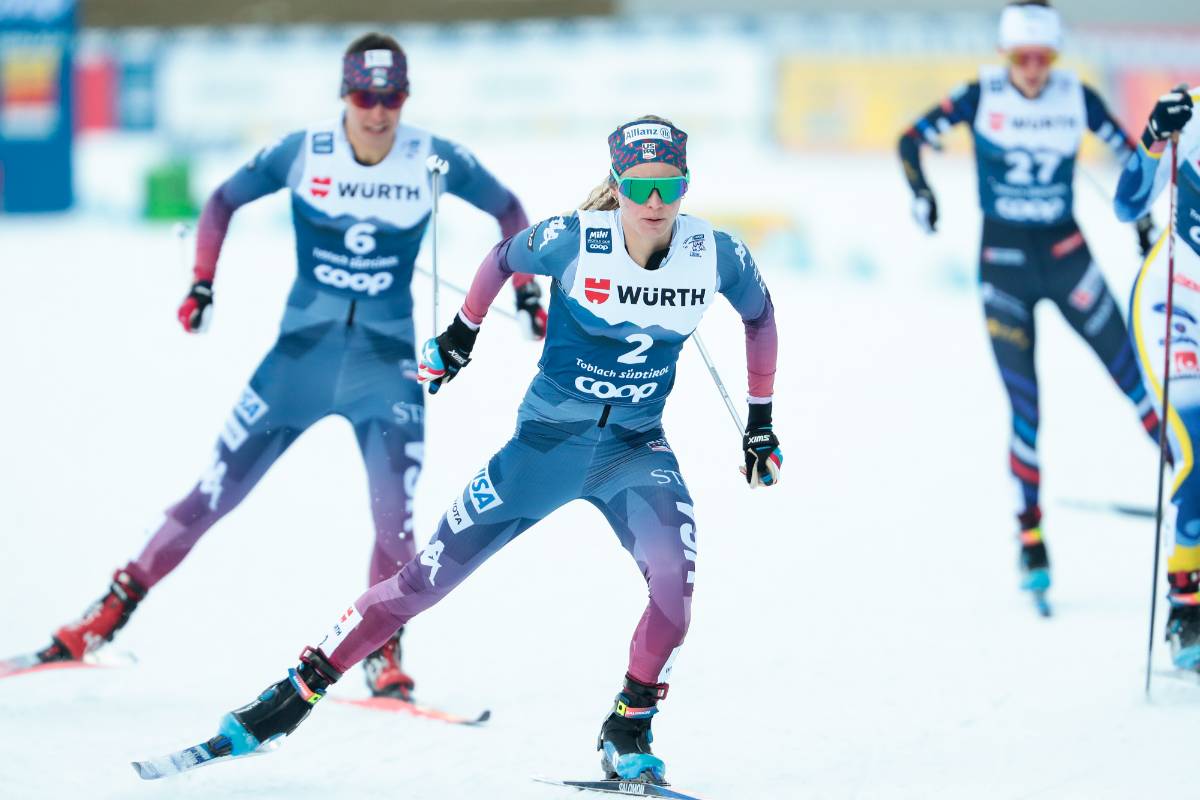I think the Boulder Mountain Tour is my favorite race, and I have finally figured out why. This was the third year in a row my wife Karen and I have participated, and each year we drive about 12 (sometimes harrowing) hours each way for a short weekend away from kids to enjoy a race that in fast conditions can be over in less than 75 minutes.
The BMT has all of the elements that make for a good race: Seamless efficiency abounds from the bus ride to the start all the way through to the awards at the end of the day; a point to point course where a particular course feature only gets to hurt you once; and impeccable grooming on a magnificent trail system that enjoys a consistently good snowpack in February. But there is one aspect that I think makes it stand apart from many other races. Before I get to it, let me explain a little about the race and my experience in it this year.
Everyone always mentions the total elevation loss when they talk about the BMT, and yes, it does drop, but it is a mistake to assume that this makes the race “easy” by any stretch of the imagination. In fact, the elevation drop and resulting fast “V2” sections in the later half of the race sort of turn normal race strategy upside down. Instead of the “start out reasonably and save some for the end” mantra that we all have probably learned the hard way to respect, the BMT feels more to me like a short bicycle road race with a strong crosswind: Go hard in the beginning and hope you make into a good “echelon”, because the groups that form in the last half of the race have a distinct advantage over an individual effort. Of course, the risk of blowing up is still there, as evidenced by the almost constant stream of stragglers that get “spit off” the back of these fast moving groups.
This group “advantage” in the later part of the race varies somewhat from year to year, depending on how fast the conditions are and how hard the wind may be blowing up the valley as the skiers descend. This year, I think the pack aspect was softened a bit by the slower conditions and less wind. The packs still formed, but there were more examples of individuals “bridging up” and changing their position on their own.
This year, I broke a pole right smack in the middle of the early “go hard” part of the race and had to ski about 5 kilometers before I was able to get a replacement, all the while drifting slowly backward in the wave of skiers that I had started with. I searched for positive thoughts and told myself that John Aalberg had placed fourth in the race last year (and only 1 sec out of first) after suffering through TWO broken poles, but the positive thinking did not seem to make me go any faster. Not even the image of Chris Ransom, who last month skied like a monster at Masters Nationals with a single pole and a cast on one arm made me go any faster. All I could think about was how it must have been that swinging cast that made him go so well with a single pole – or perhaps it was all the one arm practice he got at the 24 hours of Telemark the week before.
When I finally got to the 10k feedzone and pole exchange, I realized that I was not the first casualty because when the crowd of thirty or so people saw that I was in need of a pole, they chanted in unison, “Pole, Pole, Pole”. I guess this was the warning for the very nice lady up ahead because she handed me a wonderful Swix pole that was only 10cm shorter than my good one – and once I got the strap figured out it felt perfectly “normal”, probably because my torso was now permanently kinked to the right from trying to make my “halfa” pole work.
Anyway, it was a whole new race for me, but much different than I had intended. Instead of a “go hard as you can and then hang on” approach, I now just needed to work my way back up as far as I could. Each group of skiers ahead was not a final goal or a “ride” to hang on to, but instead just a temporary carrot that I needed to work my way around in search of the next “goal”.
One of the skiers that had passed me shortly before I got a new pole was Rebecca Dussault. She had started a minute behind me and had obviously skied the “go hard” section well enough to now be clear of the other lead women. When I caught back up to her and a small group of men that she was with, it was obvious that she was thinking about a potential “train” of women that might be steaming up behind her. Every time we went around a curve she would look back over her shoulder to see what might be lurking back there.
 sometimes let their egos get the best of them and are not as “nice” about being passed as they could be.</p>
<p>As I worked my way back up through the small groups ahead, I began trading the lead with a skier that had taken the “go hard” a little too seriously but was now recovering and skiing his way back up, too. I was thankful to have someone to share “pulls” with, and again, the experience reminded me of cycling. As we motored steadily along, I could see a huge group of 15 or more men ahead, but I was having a hard time judging how far ahead they were – “2 minutes? 3 minutes?” Later, my team mates Kent Murdoch and Dan Packman reported that this mega group of 20 skiers was skiing a “cat and mouse” game for part of the last 15 kilometers, explaining why they seemed to be alternating between closer and farther ahead. It seemed like every few kilometers a skier would appear and we would encounter another “victim” from the surging group ahead. These were probably skiers who had blown up and had been just hanging on.</p>
<p>Somewhere in the last few kilometers I looked back and realized that I had lost my companion and I would not be thinking about a sprint – time to just put my head down and ski to the finish. I ended up 40 seconds behind the mega group, disappointed in my race, but still happy I didn’t let a silly broken pole get to me.</p>
<p><BR><img decoding=)



